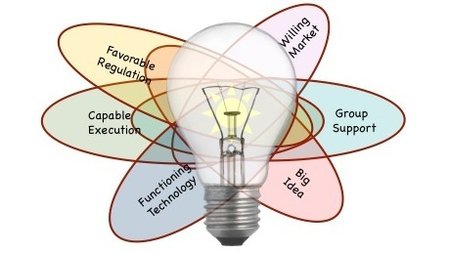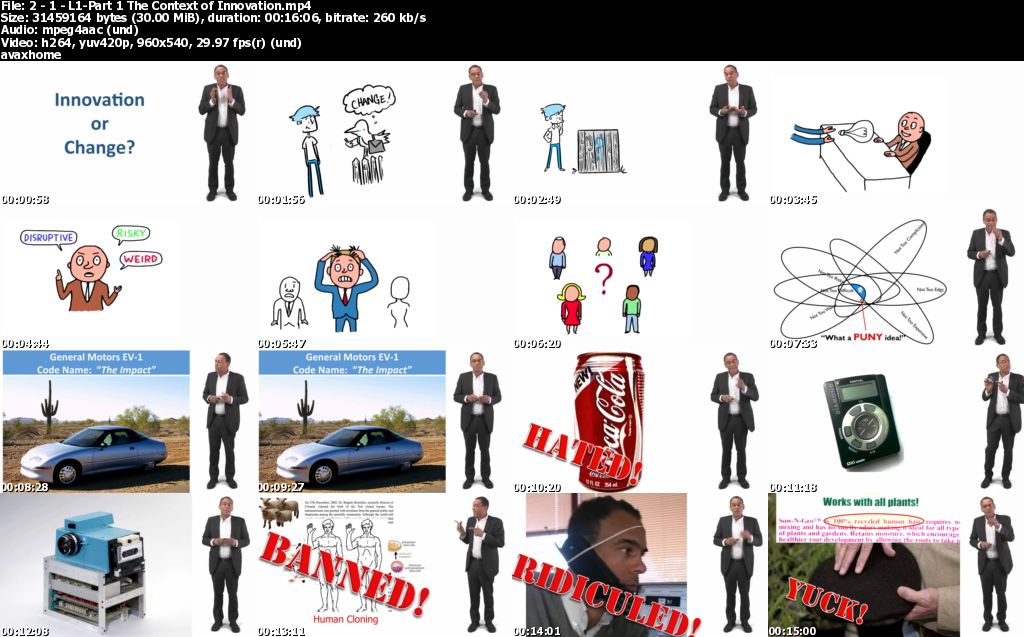
Coursera – Leading Strategic Innovation in Organizations
Genre: Business & Management
Improve your ability to manage creativity and to lead an innovation strategy in businesses, schools, hospitals, governments, and other complex organizations and institutions, by diagnosing likely innovation failures before they occur.
About the Course
This course is intended to help you improve your ability to manage creativity, innovation and change in business, education, healthcare, government, and in any other complex organization or institution by diagnosing potential innovation failures before they can occur. Using an “innovation constraints” framework that draws on modern social science research and on insights from business practice, participants will learn how to best manage people (be they co-workers, bosses, customers, clients, friends or any other stakeholders) when innovation is the goal. While we see several examples of technological innovation, we are not focused on the management of technology. Instead, we focus on something much more powerful: understanding and managing the people engaged in creation, innovation and positive change, regardless of the context.
The course is designed to help you answer the following types of questions:
What are the conditions for successful innovation?
What causes innovation to fail?
What makes creative people creative?
How should I manage an innovative team?
How do I lead an effective brainstorm process?
What is an innovation portfolio and how can I manage one?
Why do so many great ideas get killed?
The approach in this class will be to treat innovation as the process of generating, assessing, and then implementing useful and valuable ideas. As we will discuss, generating ideas is relatively easy; what can be hard is getting those ideas listened to, accepted, and implemented in organizations. In addition to learning how to lead creative people and creative teams, participants will also learn techniques for improving their own creativity. During the course you will engage numerous activities and exercises intended to bring current habits of thought and behavior to the surface for examination and change.
Course Syllabus
Week 1: Introduction: Why Everyone Wants Innovation but No One Wants to Change
We introduce the approach of the class: instead of trying to be innovative, just stop stopping it. We discuss a framework for analyzing the six most common barriers (constraints) that stop innovation.
Week 2: Individual Constraints: Why Most of Us Are More Creative Than We Think
Psychologists treat innovation as a problem of having creative ideas; we sometimes stop innovation by not “thinking different”. This week explores the constraints of perception, intellection, and expression and offers strategies for overcoming them.
Week 3: Group Constraints: Why a Brainstorm Meeting Can Be Worse Than No Meeting at All
Social psychologists treat innovation as a group problem: we often don’t get early support for our ideas because of adverse group dynamics. This week looks at the constraints of emotion, culture, and process in groups as well as the environment within which groups work, and looks at ways to overcome them.
Week 4: Organizational Constraints: Why You’ll Never Be a Prophet in Your Own Hometown
The field of management sees the problem of innovation as one of the organization; organization is the opposite of innovation, after all. This week explores the constraints of strategy, structure, and resources and we explore ways of framing them that will help us to overcome them.
Week 5: Industry Constraints: If It’s Such a Great Idea, Why Isn’t Our Competitor Doing It?
An economist view of failed innovation sees it as a problem of adoption; when there’s no market to adopt it, it’s not an innovation, it’s just a creative idea. We look at the constraints of competition, suppliers, and markets and discuss strategies you can use to relax them.
Week 6: Societal Constraints: Why My Innovation Means You Have to Change
The sociological and anthropological perspective suggests that societies control or obstruct innovations that are deemed as dangerous or contrary to societal values. This week explores the constraints of identity, social control, and history and we will seek an understanding of how we might avoid them.
Week 7: Technological Constraints: How to Take a Really Hard Problem and Make It Completely Impossible
Engineers and scientists see failed innovation as a failure of technology; if it doesn’t work, it’s not an innovation. Here we explore the constraints of knowledge, time, and the natural environment. Rather than trying to overcome them, we develop strategies for working within these constraints.
Week 8: When Failure Is Not an Option: Leading an Innovation Strategy
The final week has us putting the entire model together into the leadership context. We will learn about innovation portfolios and discuss a tested process for moving innovations from ideas to realities.

Download uploaded
http://uploaded.net/file/32u7xzfm/Leading%20Strategic%20Innovation%20in%20Organizations.part1.rar
http://uploaded.net/file/l3ov7w7h/Leading%20Strategic%20Innovation%20in%20Organizations.part2.rar
Download nitroflare
http://www.nitroflare.com/view/C3CE5F7F3FAE514/Leading_Strategic_Innovation_in_Organizations.part1.rar
http://www.nitroflare.com/view/5849CFF6FE7D65A/Leading_Strategic_Innovation_in_Organizations.part2.rar
Download 百度云
你是VIP 1个月(1 month)赞助会员,
转载请注明:0daytown » Coursera – Leading Strategic Innovation in Organizations